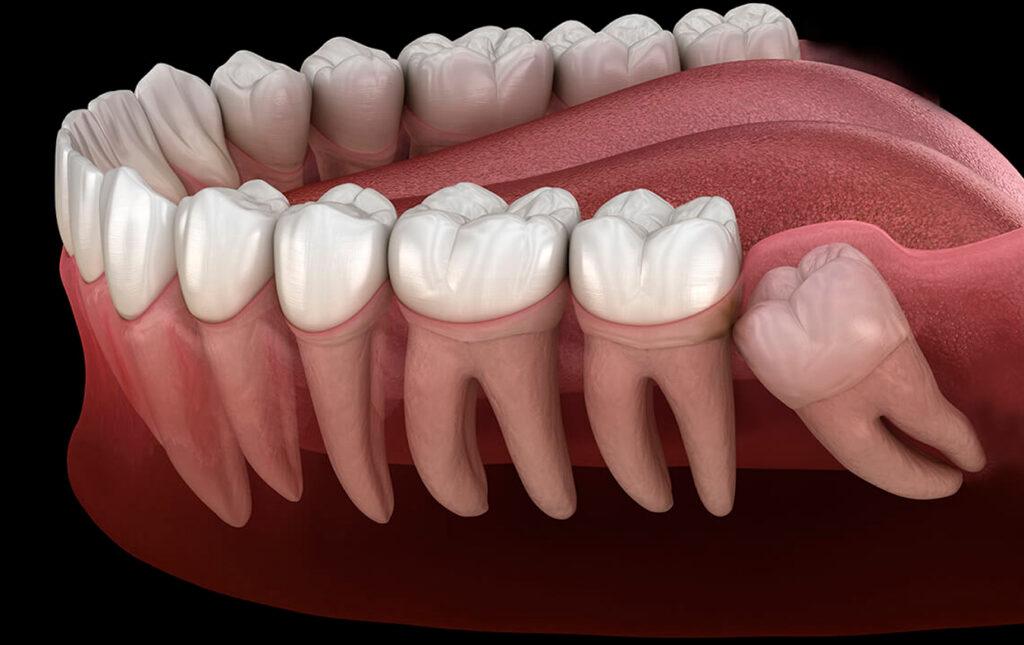
Wisdom teeth are aptly named, because they are the last molars to come in, often not until a person is into their twenties. While they could add biting surface and provide stability for the mouth if they are well-positioned and healthy, more often than not they give people a lot of trouble as they try to come in. Wisdom teeth have a tendency to come in crooked or misaligned.
When wisdom teeth are badly aligned they will crowd the second molars next to them. They can damage those teeth and even the jawbone or nerves that run through that part of the face. Often the wisdom teeth lean toward the second molars when they come in. This makes both more susceptible to trapping plaque and food particles, which can cause tooth decay in both the wisdom tooth and the molar. Because of the location of these teeth, wisdom teeth are often difficult to brush and floss, especially for people who have smaller mouths, increasing the possibility of their developing cavities.
Many people have suffered from wisdom teeth that have become impacted. This happens when wisdom teeth do not fully come through the gum and are trapped within the jawbone or under the soft tissue of the gum. This can be very painful, and impacted wisdom teeth have a tendency to develop infections or abscesses because the opening allows bacteria to breed. When that happens, they need to be removed as soon as the infection is under control.
As teenagers become young adults, the dentist or oral surgeon will keep track of the development of their wisdom teeth. Not all adults develop wisdom teeth, in fact. The dentist may recommend that they be removed early if they appear to be coming in at an angle or if they are misaligned, to prevent problems down the line. Extraction is easier and recovery is quicker for younger people while the tooth root is still smaller, not as well developed, and the bone is less dense. Wisdom tooth removal is more painful as people get older.
Wisdom teeth typically are removed by oral surgeons, although dentists also perform wisdom tooth extractions. If they are straight and in proper alignment, removal is fairly straightforward, much like the extraction of any other molar. However, if they are angled, impacted or embedded in the bone, or have been infected or an abscess has formed, they can be much more difficult to remove. Sometimes these teeth will be removed in pieces, rather than remove the whole tooth at once. This will minimize the amount of bone that needs to be removed along with a tooth that is embedded in the jawbone.
Of course, the patient is anesthetized for such extractions, using a local anesthetic such as Novocaine. If the procedure is expected to be difficult or the patient is very anxious or fearful, the oral surgeon or dentist will administer a sedative as well. This could take the form of an oral or intravenous sedative, such as Valium. Nitrous oxide, commonly known as “laughing gas,” is frequently used because it is effective and the patient will be able to drive following the procedure. Patients who have received any other type of medication should not plan to drive themselves home from the dentist’s office.

